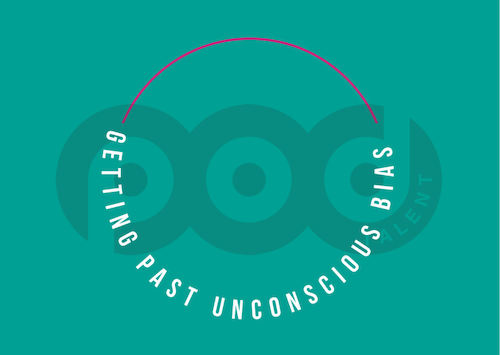When we hear the phrase, “unconscious bias”, there is a temptation to think that this doesn’t involve us and that we would never make decisions or form impressions of people that weren’t fair or based on facts.
However, and particularly when it comes to recruitment and making hiring decisions, the evidence suggests the opposite. On average, recruiters and hiring managers spend:
5-7 seconds looking at a CV
7 seconds to form an impression of who someone is and what they are like
5-15 minutes of interviewing to make a hiring decision
When we think about it like this, we cannot ignore that there must be automatic, internalised factors at play as we make decisions on who to call, what a good candidate looks like, and who to ultimately hire. This article aims to uncover some of the unconscious biases that often affect us and some ways in which we can try to get past them.
Affinity bias – possibly the easiest trap to fall into and therefore one of the most important to be aware of. There is a temptation to favour those candidates with whom we share experiences or qualities, or whom we simply just like. This can very easily get in the way of making decisions based on competency and ability to do a job.
Beauty bias – conventionally attractive candidates tend to be favoured in a hiring process as they are more often considered kind, more talented, switched-on, and honest. We are tempted to use the terms “polished” and “well-presented” as if they are deciding factors in a candidate’s suitability for a job.
Contrast bias – this is the tendency to compare candidates against others with whom we have had good or bad experiences, and this could result in our not assessing a candidate fairly as an individual, and actually work against diversity in our hiring strategy.
Horns & Halo bias – sometimes we put too much weight on a particular quality or accolade to the detriment of other signs that should be given more consideration. One such example would be to see the name of a particular university or employer on a CV and automatically assume that a candidate is perfect, without even speaking to them!
Visual bias – ethnicity, height, weight, tattoos, clothing. We can be tempted to make assumptions on a candidate’s suitability for a job, or “professionalism”, based on these aspects.
The above unconscious biases can feed into our idea of perceived culture fit. What this can result in, over time, is recruiting and hiring a team of people who are very similar based on assumed competence. This ends up counteracting diversity within a team and business.
How can we ensure that our own processes are as bias-free as possible? One simple way is to have a diverse interview panel and therefore a range of perspectives on a candidate and an interview performance. This will help prevent an individual’s biases from overly influencing a hiring process.
A second way is to “Practise the Pause” and take a moment to reflect upon why you are angling towards certain choices. Ask yourself…
“Why am I making this decision?”
“What is influencing me right now, and where is this information coming from?”
“Is bias playing into this?”
“Do I have a concrete reason for making this decision?”
Overall, the best way to prevent unconscious bias from affecting diversity in recruitment is simply to be aware of what could be affecting you, and taking the time to reflect on why you are making the decisions that you are.
If you’d like to discuss your D&I hiring strategy with us at Pod, we’d love to hear from you.

